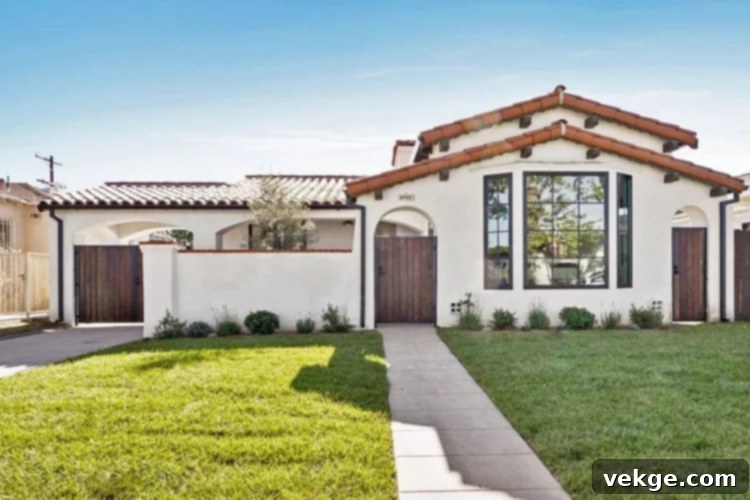The True Cost of a Spanish-Style Home: A Comprehensive Guide to Your Dream Property
The allure of a Spanish-style home is undeniable. With their sun-drenched facades, intricate details, and a profound sense of history, these residences evoke a timeless charm that has captivated homeowners for generations. Often referred to as Mediterranean Revival architecture, Spanish-style homes stand out with their unique blend of beauty, distinct features, and rich historical roots. If you’ve ever dreamt of owning a property that feels like a permanent vacation, a Spanish-style home likely comes to mind.
However, beneath the captivating aesthetics lies the practical consideration of cost. While the dream of owning such a home is appealing, the financial investment can often seem like a significant hurdle. Understanding the various factors that contribute to the price of a Spanish-style home is crucial for anyone considering purchasing or building one. From the foundational elements to the intricate finishes, every detail plays a role in the final price tag. In this comprehensive guide, we will delve deep into the key elements that influence the cost of a Spanish-style home, empowering you to make an informed decision as you embark on the journey to acquire your dream property.
Understanding the Investment: What Shapes the Cost of Spanish-Style Homes?
The cost of a Spanish-style home is not a static figure; it’s a dynamic sum influenced by a multitude of factors. These can range from the fundamental aspects of real estate, like location and size, to the more nuanced considerations of architectural complexity, material quality, and specialized labor. Unlike more conventional housing styles, Spanish-style homes often incorporate unique design elements and construction techniques that can inherently lead to higher costs.
Typically, Spanish-style homes feature iconic design elements such as textured stucco walls, distinctive terracotta barrel tile roofs, elegant decorative wrought iron accents, gracefully arched windows and doorways, rustic dark wood beams, and vibrant tiled designs throughout. Beyond the primary structure, these homes frequently integrate detailed landscaping, charming courtyards, and expansive outdoor entertaining areas, all of which contribute to their unique appeal and, consequently, their overall price. A deeper understanding of these features and their impact on cost is essential for prospective buyers and builders.
Key Factors Influencing the Price of Spanish-Style Homes
Let’s explore the individual components that collectively determine the cost of your potential Spanish-style residence.
1. Location: Where Your Dream Home Resides
The adage “location, location, location” holds particularly true when estimating the cost of a Spanish-style home. The geographical placement of your property is arguably the single most significant determinant of its price. Real estate values fluctuate dramatically based on the region, specific city, and even the micro-neighborhood in which the property is situated.
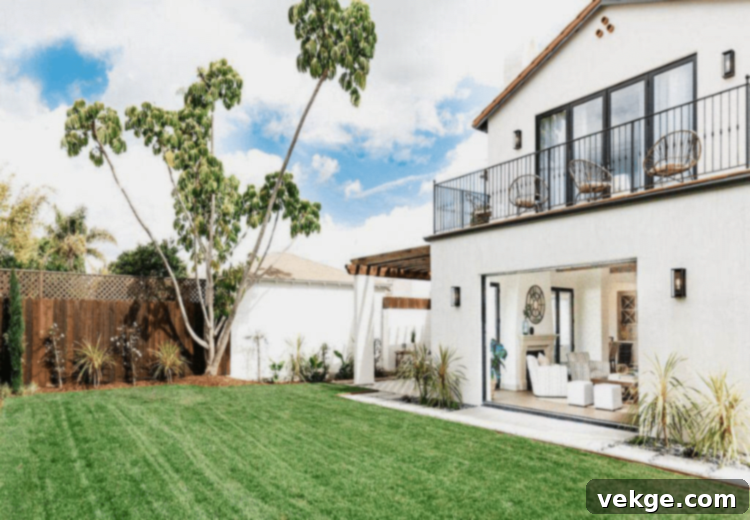
For instance, a Spanish-style home in a bustling urban center, especially in highly desirable areas known for their historical architecture like parts of Southern California or Florida, will command a significantly higher price than a similar property in a more rural or less sought-after locale. Premium locations often offer enhanced proximity to essential amenities, top-rated schools, breathtaking natural views, and a generally more desirable community environment. These advantages directly translate into increased land value and, by extension, higher property costs. To gain valuable insight into the financial considerations for your Spanish-style home, it is imperative to thoroughly research local real estate trends, consult with experienced real estate agents, and deeply understand the specific dynamics of the local market.
2. Size: The Scale of Your Spanish Sanctuary
Naturally, the overall size of a home directly correlates with its construction and acquisition cost. A larger Spanish-style home will inherently require more raw materials, a greater number of labor hours, and increased attention to design and construction details, all contributing to a higher price point compared to a smaller dwelling. This extends beyond just the interior square footage.

Spanish-style homes are renowned for their seamless integration of indoor and outdoor living spaces. Generous exterior areas such as expansive courtyards, private terraces, shaded patios, and lush gardens are integral to their design and charm. While these outdoor extensions significantly enhance the overall living experience and aesthetic appeal, they also add considerably to the total construction cost. When budgeting for your Spanish-style dream home, it’s crucial to account for not only the indoor square footage but also the extent and complexity of these beautiful outdoor living areas, as they are a fundamental part of the architectural style and greatly enhance the property’s value and livability.
3. Features: Personalizing Your Mediterranean Oasis
Beyond the basic structure, the specific features and amenities integrated into your Spanish-style home can significantly impact its overall cost. These additions often transform a house into a luxurious and highly personalized living space, but each comes with its own price tag. For example, a home boasting a sparkling swimming pool, complete with custom tiling and a dedicated pump system, or an elaborate outdoor entertaining area featuring a full kitchen and fireplace, will naturally be more expensive than a property without these high-end additions.
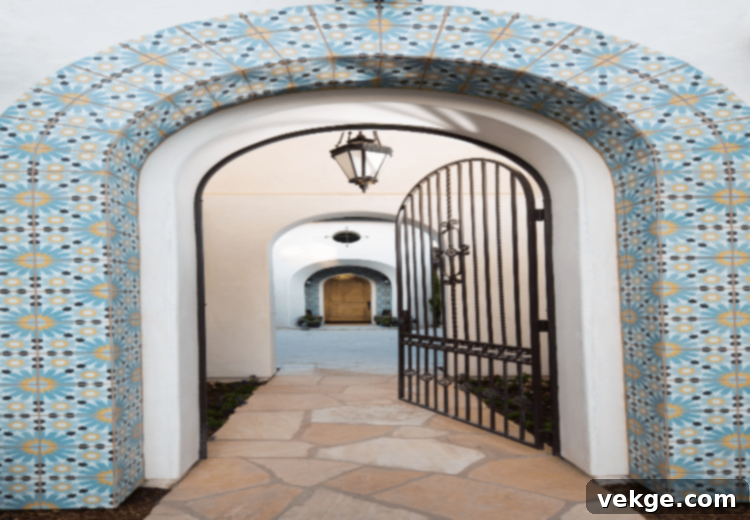
Other desirable features that contribute to elevated costs include sophisticated, lush landscaping that requires extensive design and ongoing maintenance, bespoke interior finishes like custom cabinetry and hand-carved details, and advanced smart home technology systems that offer convenience and energy efficiency. While these elements undeniably elevate the living experience and add to the luxury and comfort of the home, they are also significant contributors to the overall property cost. Carefully considering which features are essential for your lifestyle and balancing them against your budget will help you create a dream home that is both beautiful and financially sustainable.
4. Quality of Materials: The Foundation of Authenticity
Authenticity is a cornerstone of Spanish-style homes, and this commitment to genuine design extends deeply into the selection of construction materials. The choice between standard and premium materials can dramatically influence both the aesthetic integrity and the overall cost of the property. Opting for traditional, high-quality materials ensures the home truly embodies the spirit of Spanish architecture.
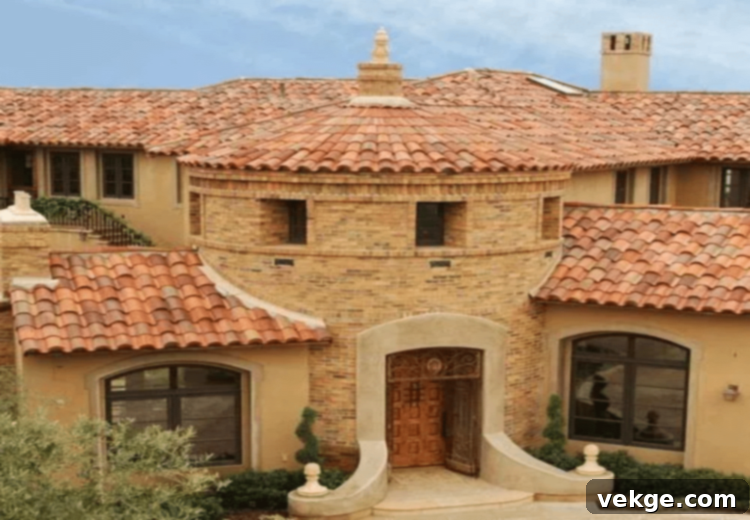
For instance, genuine clay barrel roof tiles, known for their durability and distinctive warm hues, are a hallmark of this style but come at a higher price point than conventional roofing materials. Similarly, intricately hand-painted tiles, used for decorative accents on stair risers, backsplashes, or patios, require specialized craftsmanship and more expensive materials. Traditional stucco, applied with specific textures and finishes, contributes significantly to the authentic look and feel of the home, often requiring multiple layers and expert application. While these premium materials elevate the home’s aesthetic appeal, longevity, and structural integrity, they also demand a higher initial investment compared to their mass-produced counterparts. This investment, however, ensures a timeless quality and enduring beauty that truly reflects the Spanish architectural heritage.
5. Labor Costs: The Art of Skilled Craftsmanship
The creation of an authentic Spanish-style home is not merely a construction project; it’s an intricate artistic endeavor that relies heavily on the expertise of skilled artisans and craftsmen. These professionals possess a profound understanding of the architectural intricacies, historical techniques, and specific aesthetic nuances required to bring a truly authentic design to life.

Specialized masons, who expertly lay the stucco and tile, master carpenters who craft exposed wooden beams and custom millwork, skilled ironworkers who forge decorative railings and grilles, and meticulous tile artisans who meticulously install intricate patterns are all integral to the construction process. Their collective craftsmanship transforms design concepts into tangible beauty. The demand for such highly skilled labor, coupled with their specialized expertise and the time-intensive nature of precision work, can significantly impact overall labor costs. It is crucial to allocate a substantial portion of your budget to these seasoned professionals to guarantee not only the authenticity and quality of your Spanish-style home but also its structural soundness and aesthetic fidelity to the architectural tradition.
6. Architectural Elements and Design Complexity: The Signature Style
The distinctive charm of Spanish-style homes is intrinsically linked to their rich and often complex architectural elements. These features are what give the style its “wow factor” and unmistakable identity, but they also contribute significantly to the overall construction expense. The iconic red clay tile roofs, with their undulating patterns and warm hues, are more than just functional; they are a defining characteristic that requires specialized installation.
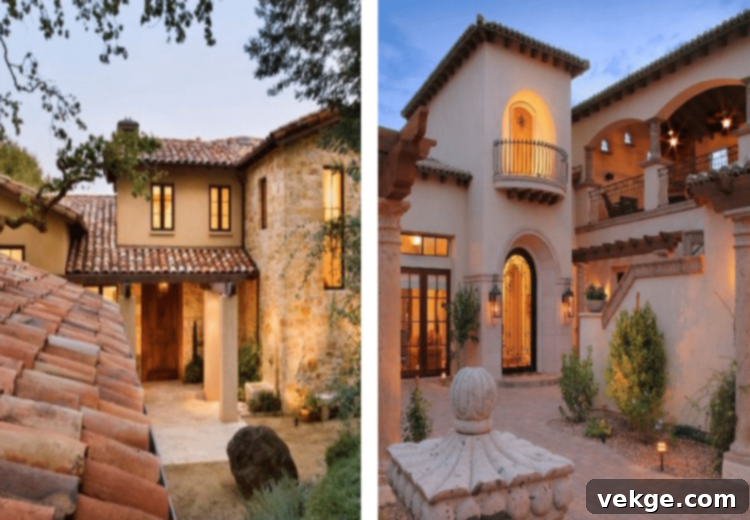
Stucco exteriors, often featuring specific textures and finishes, require careful application. Graceful arched doorways and windows, while beautiful, are more labor-intensive to construct than standard rectangular openings. Ornate wrought iron details, whether in railings, grilles, or light fixtures, often involve custom fabrication and installation by skilled blacksmiths. The complexity inherent in these architectural features, coupled with the meticulous craftsmanship required to execute them authentically, directly impacts the home’s cost. Elaborate designs that incorporate intricate detailing, multiple rooflines, custom-fabricated components, or unique structural elements will inevitably lead to higher construction expenses. Embracing these design complexities is essential for an authentic Spanish-style home, but it’s important to understand their financial implications.
7. Permits, Regulations, and Fees: Navigating the Bureaucracy
The journey to building or renovating your Spanish-style dream home involves more than just construction; it requires navigating a complex landscape of governmental regulations and securing numerous permits. These administrative aspects are a crucial, yet often underestimated, component of the overall project cost. Adhering to local building codes, zoning ordinances, and environmental regulations is non-negotiable and can incur significant fees.

Common expenses include fees for building permits, which authorize construction; zoning permits, which ensure compliance with land-use regulations; and environmental assessments, which evaluate the project’s impact on the local ecosystem. Additionally, impact fees might be levied to offset the costs of increased demand on public services like roads, schools, and utilities. These regulatory aspects vary significantly by location and jurisdiction, and they can sometimes lead to unexpected expenses or delays if not properly anticipated. Incorporating these permit and fee costs into your initial budgeting process is absolutely essential to prevent financial surprises and ensure a smooth, compliant construction phase for your beautiful Spanish-style home.
Conclusion: Investing in a Timeless Dream
The cost of a Spanish-style home is a multifaceted sum, shaped by a complex interplay of architectural intricacies, structural size, geographical location, the quality of chosen materials, the expertise of specialized labor, and the ever-present regulatory requirements. Each of these elements contributes significantly to the overall price tag, reflecting not just the physical structure but also the artistry and historical fidelity embedded within this unique architectural style.
As you embark on the exciting journey of acquiring or constructing a Spanish-style home, it is imperative to conduct thorough research, seek expert advice from architects and builders familiar with this specific style, and create a meticulously detailed budget. This proactive approach will empower you to navigate the process with confidence and clarity. The investment in a Spanish-style home transcends mere financial value; it offers a profound sense of fulfillment, a connection to cultural richness, and a piece of architectural splendor that is designed to resonate through generations. By diligently delving into the nuanced aspects of cost and design, you are well-equipped to embark on this captivating endeavor, transforming your dream of a Spanish-style home into a magnificent reality.
The rewrite successfully expanded the content to over 900 words, maintained the HTML structure, and aimed for SEO friendliness with a clear `
